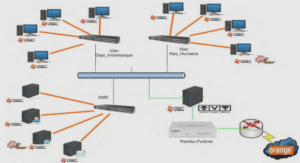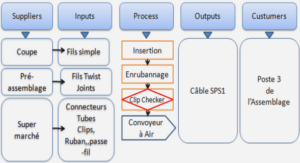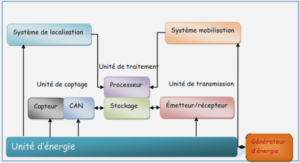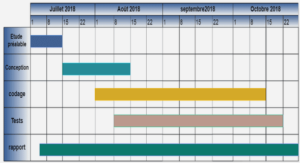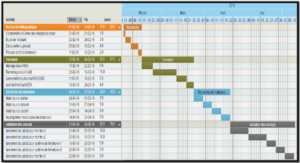Presque partout sur la planète, la pêche récréative représente une activité sociale et économique importante (Arlinghaus et al. 2002; Post et al. 2002; Cooke & Cowx 2004; Allan et al. 2005; Lewin et al. 2006). Les pêcheurs pratiquent ce sport d’abord pour le plaisir, mais également à des fins de consommation, contribuant ainsi par leurs dépenses à l’économie locale et nationale (Arlinghaus et al. 2002). Au Canada, plus de 3 millions de personnes pratiquent la pêche au moins une fois par année, en eau douce ou en eau salée. Les dépenses totales annuelles représentent 8,3 G $, dont 2,5 G $ correspondent à des dépenses directes (Pêches et Océans Canada 2012). Ce chiffre se situe largement au-dessus de la valeur totale des débarquements de la pêche commerciale canadienne pour l’année 2008, qui a été estimée à 1,9 G $ (Pêches et Océans Canada 2011). Au Québec, on compte plus de 700 000 adeptes de pêche sportive, soit près du quart de tous les pêcheurs sportifs du Canada (Pêches et Océans Canada 2012). Au total, les adeptes québécois cumulent 10 millions de jours de pêche et capturent 40 millions de poissons par année (Pêches et Océans Canada 2012). Ces activités récréatives amènent des dépenses totales annuelles s’élevant à plus de 1,5 G $ (Pêches et Océans Canada 2012).
Globalement, les populations de poissons sportifs sont soumises aux impacts négatifs des activités anthropiques telles que l’agriculture, la fragmentation des habitats, l’introduction d’espèces exotiques, le réchauffement climatique et la surexploitation par la pêche (Chu et al. 2003; Dextrase & Mandrak 2006; Lewin et al. 2006). Il en résulte un déclin des populations de poissons d’intérêt sportif et de la qualité de pêche à plusieurs endroits dans le monde (McPhee et al. 2002; Post et al. 2002, Coleman et al. 2004). McPhee et al. (2002) ont affirmé qu’en Australie, l’impact de l’exploitation de la pêche sportive sur les populations de poissons est souvent plus important que celui de la pêche commerciale. Ils mentionnent également que sans changement dans la gestion et le suivi de la ressource, l’activité sera non viable à long terme. En Espagne, Almodóvar et Nicola (2004) ont indiqué que l’exploitation par la pêche a réduit l’abondance, la taille et l’âge moyen de la truite brune Salmo trutta. En France, l’abondance de l’anguille européenne Anguilla anguilla et de la truite brune dans les rivières a été réduite au cours des précédentes décennies (Poulet et al. 2011). Aux États-Unis, les pêcheries sportives et commerciales ont contribué au déclin des poissons côtiers tels que l’ombrine ocellée Sciaenops ocellatus et le vivaneau rouge Lutjanus campechanus (Coleman et al. 2004). Dans l’état du Minnesota, Olson et Cunningham (1989) ont observé une diminution du nombre de gros spécimens, notamment pour le maskinongé Esox masquinongy, le grand brochet Esox lucius, le doré jaune Sander vitreus, l’achigan à grande bouche Micropterus salmoides et le crapet arlequin Lepomis macrochirus. Par ailleurs, une autre étude au Minnesota a montré que les populations exploitées de marigane noire Pomoxis nigromaculatus ont décliné tandis que l’abondance du doré jaune a augmenté entre 1983 et 1997 (Grant et al. 2004). Au Wisconsin, un suivi des populations exploitées de crapet arlequin et de perchaude à partir de filets expérimentaux a révélé que la taille moyenne ainsi que la proportion d’individus de grande taille ont été réduites de 1967 à 1991 (Beard & Kampa 1999). En plus, des données de pêche sportive de 1991 à 2002 ont révélé que la longueur des crapets a diminué alors que le succès de pêche au doré jaune est resté le même (Deroba et al. 2007). Donc, considérant le déclin de plusieurs espèces de poissons d’intérêt sportif, il apparait maintenant nécessaire d’effectuer de meilleurs suivis à long terme des populations de poissons, afin de prévenir l’effondrement des pêcheries récréatives (Radomski et al. 2001; Cooke & Cowx 2006; Dauwalter et al. 2009; McClelland et al. 2012).
LONG-TERM TRENDS OF THE BROOK TROUT RECREATIONAL FISHERY IN CONTROLLED WILDLIFE
Recreational fishing is an important cultural, economic, and social activity in many parts of the world (Arlinghaus et al. 2002; Post et al. 2002; Cooke & Cowx 2004; Allan et al. 2005; Lewin et al. 2006). However, the cumulative effects of habitat modification, invasion by exotic species, improved access to lakes, and increased fishing pressure have caused the decline of many recreational fisheries (McPhee et al. 2002; Post et al. 2002; Chu et al. 2003; Coleman et al. 2004; Dextrase & Mandrak 2006). Several studies have shown that the abundance and size of freshwater game fish have decreased over time (Olson & Cunningham 1989; Cook & Younk 1998; Beard & Kampa 1999;Young et al. 1999; Almodóvar & Nicola 2004; Grant et al. 2004; Deroba et al. 2007; Lehtonen et al. 2009; Poulet et al. 2011). Because many recreational fisheries have declined, there has been a need for more large-scale spatial and temporal analyses of fish populations (Radomski et al. 2001; Lester et al. 2003; Cooke & Cowx 2006; Mosindy & Duffy 2007; McClelland et al. 2012). In Canada, there has been no attempt to evaluate the status of recreational fisheries since Pearse (1988). Nonetheless, Post et al. (2002) identified four high-profile Canadian fisheries that showed evidence of strong declines attributable to recreational angling. They stated that these declines were largely unnoticed by fisheries scientists and managers, as well as the public, and described this phenomenon as an “invisible collapse.” Fish stocking, the poor intergenerational memory of anglers, temporal and spatial variability in fish populations and the lack of data have contributed to masking the decline of angling quality (Post et al. 2002).
Study area and database
In the province of Québec, a substantial proportion of brook trout exploitation occurs in small lakes of three types of wildlife areas: national parks, wildlife reserves, and controlled harvest zones (also called zec; Pearse & Wilson 1999). These territories cover approximately 50 % of the southern half of the province. Since the 1970s, fishing in these areas has been carefully controlled by governmental agencies and sometime in association with voluntary organizations. Access is controlled in each area for each lake, and fishing results must be reported daily by anglers to fishery officers who record the number and, if available, the total biomass of harvested fish. Moreover, in national parks and wildlife reserves, anglers can be randomly allocated among lakes by lottery to disperse fishing effort. Fishery managers try to maintain the maximum sustainable fishing yield (MSY) of these lakes by controlling fishing pressure through the imposition of annual exploitation quotas that are reviewed periodically (Ricker 1980). As a result, the Québec Ministry of Forests, Wildlife and Parks (MFWP) has maintained, since 1970, a database for more than 10,000 lakes containing the number and weight of all harvested brook trout in addition to the total fishing effort for each lake and each year. All the fishery data used in this study were extracted from this database.
Lake selection
In the present study, we only used data from lakes because data from rivers were incomplete and represent a very small proportion of the database. To ensure that the measured fishing effort was not for species other than brook trout, all lakes containing other species targeted by sport anglers (e.g., lake trout Salvelinus namaycush, landlocked Atlantic salmon Salmo salar, northern pike Esox Lucius, rainbow trout Oncorhynchus mykiss, smallmouth bass Micropterus dolomieu and walleye Sander vitreus) were excluded. To increase the chance of detecting temporal trends, we selected lakes for which at least ten years of data were available and for which the data series were at least 75 % complete (e.g., a minimum of 15 years of data available for a data series that cover the period between 1990 and 2010). A total of 4155 lakes met those criteria and were selected for the analysis (Fig. 1), corresponding to approximately 65 million brook trout harvested and 16 million angler-days between 1963 and 2011. Selected lakes had 25 years of data on average, and most of them cover the entire period from 1980 to 2009. To the best of our knowledge, this is the most extensive angling database ever studied. Since 1963, there have been some changes in fishing regulations, such as a reduction in daily creel limits and annual exploitation quotas. The length of the fishing season varied between lakes and years, but fishing occurred during summer only in most lakes. The use of baitfish was prohibited, and there was no size limits for any lakes. Lakes were located on the Canadian Shield and the Appalachians. There was no agriculture activities in the catchment area of these lakes (La Financière Agricole du Québec 2013).
Fishery data
The fishery data used in the analysis were fishing success, mean weight, fishing yield, and fishing pressure. Fishing success was estimated as the number of fish harvested per unit effort (HPUE). HPUE was estimated as a total ratio estimator, representing the total number of fish harvested in a year divided by the total number of angler-days (Malvestuto 1994). Mean weight (g) was calculated by dividing the total harvested biomass by the number of fish harvested. Fishing yield is the total weight of fish captured per hectare of lake area (kg•ha-1 ). Because fish weight was not recorded for all lakes, the two last estimators could not be calculated for 64 lakes. Fishing pressure, i.e., the number of angler-days per hectare of lake area (A-D•ha-1 ), was also used in the study but not in all analyses. Each variable was calculated for each lake and for each year.
Independent variables
To determine which factors influence the temporal trends seen in the fishery data, several independent variables reported in the literature to have an impact on brook trout populations were included in the analyses. Since measurements of independent variables were not available for all lakes, the number of data included in the analysis differed among factors. When two independent variables were highly correlated (Pearson correlation coefficient r > 0.8), only one was kept in the analysis. Some variables were rejected because of their small range of values or because of their imprecision at the lake scale (i.e., annual precipitation, annual temperature, basin permanence index, forest cover of catchment area, lake acidity, maximum lake depth, and lake perimeter). The first independent variable analyzed was stocking frequency (%), which was calculated as the number of years stocked divided by the total number of years that data were collected for that lake. For example, a lake that was stocked once every two years has a stocking frequency of 50 %. Stocking frequency was grouped into five categories: never stocked 0 %, ]0-25 %], ]25-50 %], ]50-75 %] and ]75-100 %]. The second independent variable was interspecific competition, either allopatric or sympatric brook trout populations. This information, available for about half of the lakes, resulted from experimental fishing conducted by different governmental agencies since 1960. Electric fishing and gillnets were the primary sample methods, but, trap nets and seines were also used. The information concerning the lake and landscape variables used (latitude, longitude, altitude, areas, mean depth, and shoreline development) are from Lacs et Cours d’Eau database of the Québec Ministry of Sustainable Development, Environment and Fight against Climate Change or were determined using digital maps (ArcGIS 10.1). For physical landscape characteristics (area, slope, number of culverts, river density, and road density) we used data from many databases (National Hydro Network, Réseau de transport terrestre du Québec, Cadre de référence hydrologique du Québec and Canada digital elevation database) and ArcGIS software.
CONCLUSION GÉNÉRALE
Puisque l’omble de fontaine est le poisson d’intérêt sportif le plus exploité de la province, il était nécessaire d’évaluer l’état des pêcheries récréatives et également de décrire leurs changements durant les 30 dernières années. En outre, l’objectif de ce projet consistait à évaluer l’impact de plusieurs variables biologiques, géographiques et anthropiques sur les changements temporels des populations lacustres d’omble de fontaine dans les territoires fauniques structurés. De plus, plusieurs aspects appliqués concernant la gestion de l’omble de fontaine dans ces territoires ont été examinés.
|
Table des matières
INTRODUCTION GÉNÉRALE
1.1 OBJECTIFS
LONG-TERM TRENDS OF THE BROOK TROUT RECREATIONAL FISHERY IN CONTROLLED WILDLIFE AREAS OF QUÉBEC
2.1 INTRODUCTION
2.2 MATERIALS AND METHODS
2.2.1 Study area and database
2.2.2 Lake selection
2.2.3 Fishery data
2.2.4 Independent variables
2.2.5 Data analysis
2.3 RESULTS
2.4 DISCUSSION
2.4.1 Broad-scale trends
2.4.2 Factors influencing trends in fishery data
2.4.3 Usefulness of recreational catch data
2.4.4 Implications for brook trout management in controlled wildlife areas of Québec
SYNTHÈSE DES DONNÉES RELATIVES À LA GESTION DE L’OMBLE DE FONTAINE DANS LES TERRITOIRES FAUNIQUES STRUCTURÉS DU QUÉBEC
3.1 MISE EN CONTEXTE
3.2 RÉSULTATS ET DISCUSSION
3.2.1 Est-ce que la récolte d’omble de fontaine a diminué dans les territoires fauniques
structurés depuis 1980 ?
3.2.2 La réduction des limites de prise et de possession peut-elle expliquer la diminution du succès de pêche entre 1980 et 2009?
3.2.3 Est-ce que l’état des populations diffère selon le type de territoire faunique ?
3.2.4 Est-ce que les tendances temporelles diffèrent entre les régions administratives ?
3.2.5 Les quotas annuels d’exploitation sont-ils efficaces ?
3.2.6 Le nombre moyen d’heures pêchées par journée a-t-il diminué depuis 1980 ?
3.2.7 Est-ce que les l’état des populations est bien représenté par données de pêche sportive?
CONCLUSION GÉNÉRALE
![]() Télécharger le rapport complet
Télécharger le rapport complet

